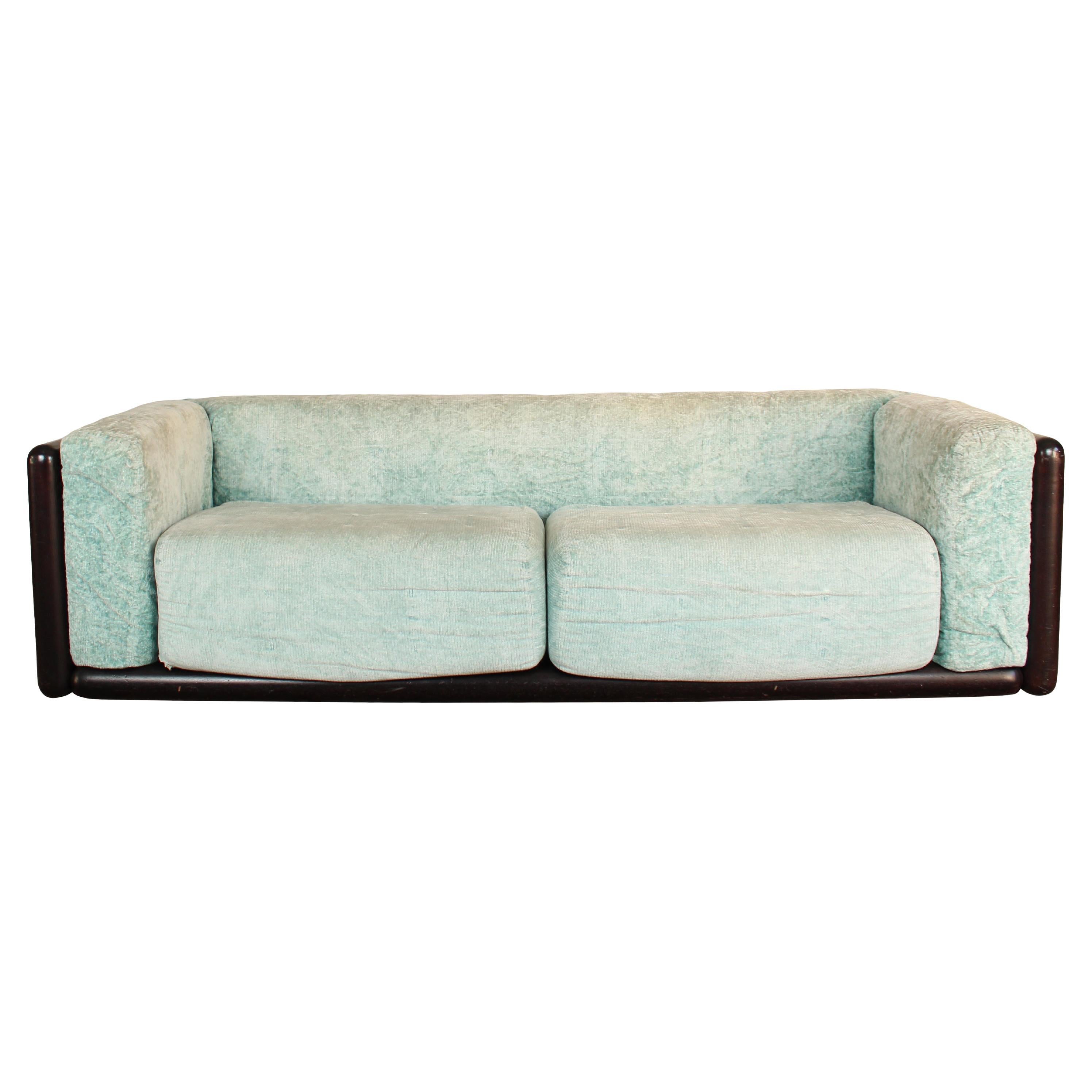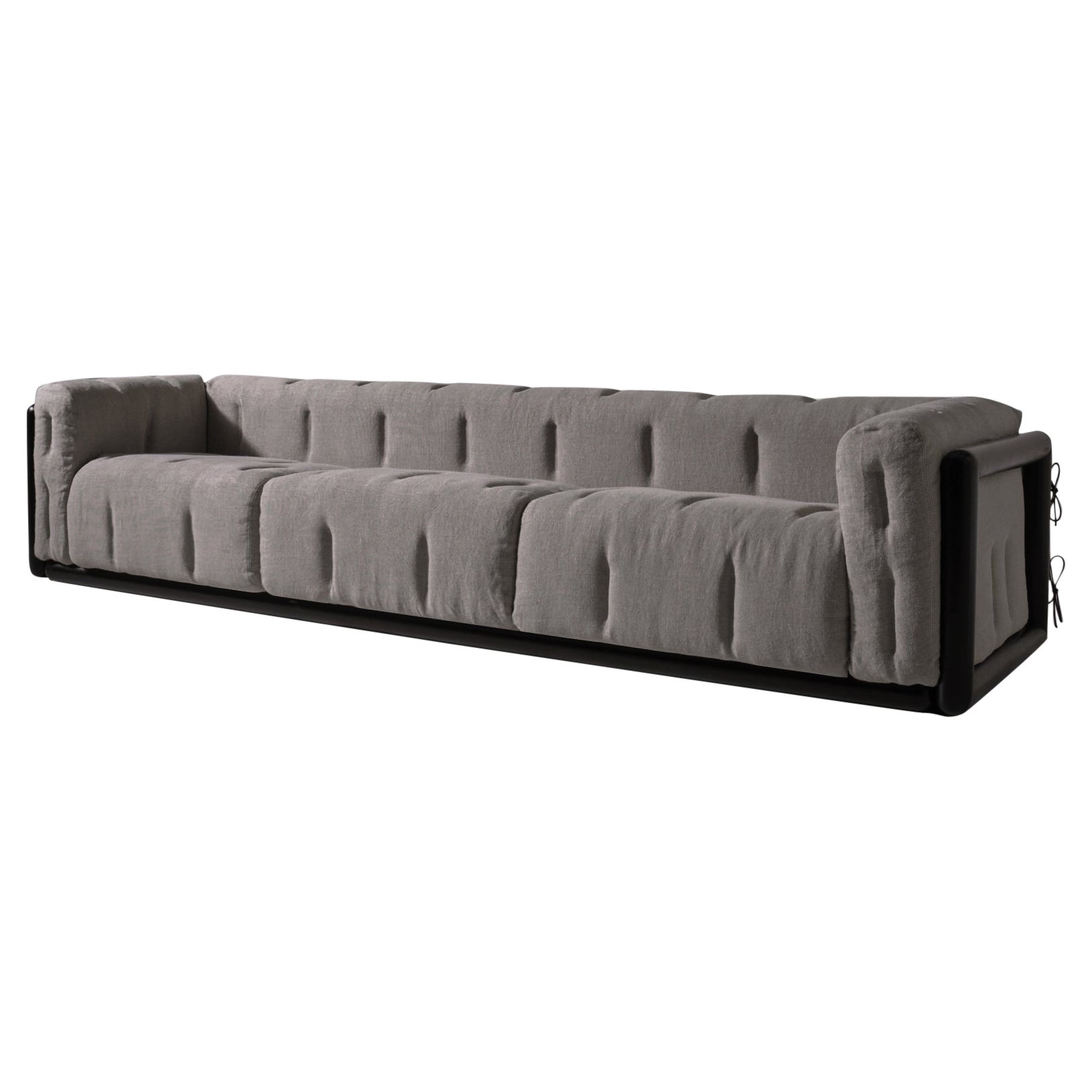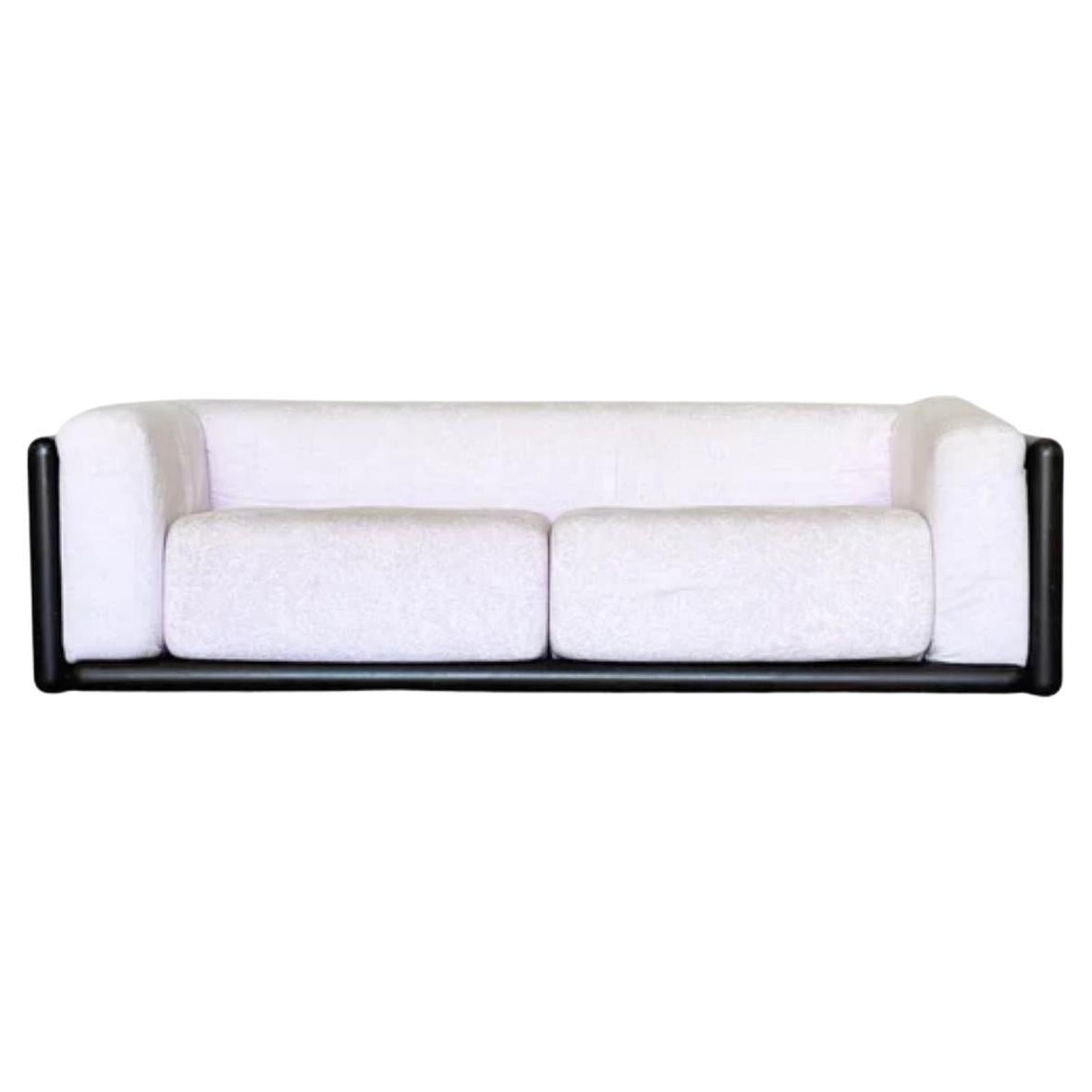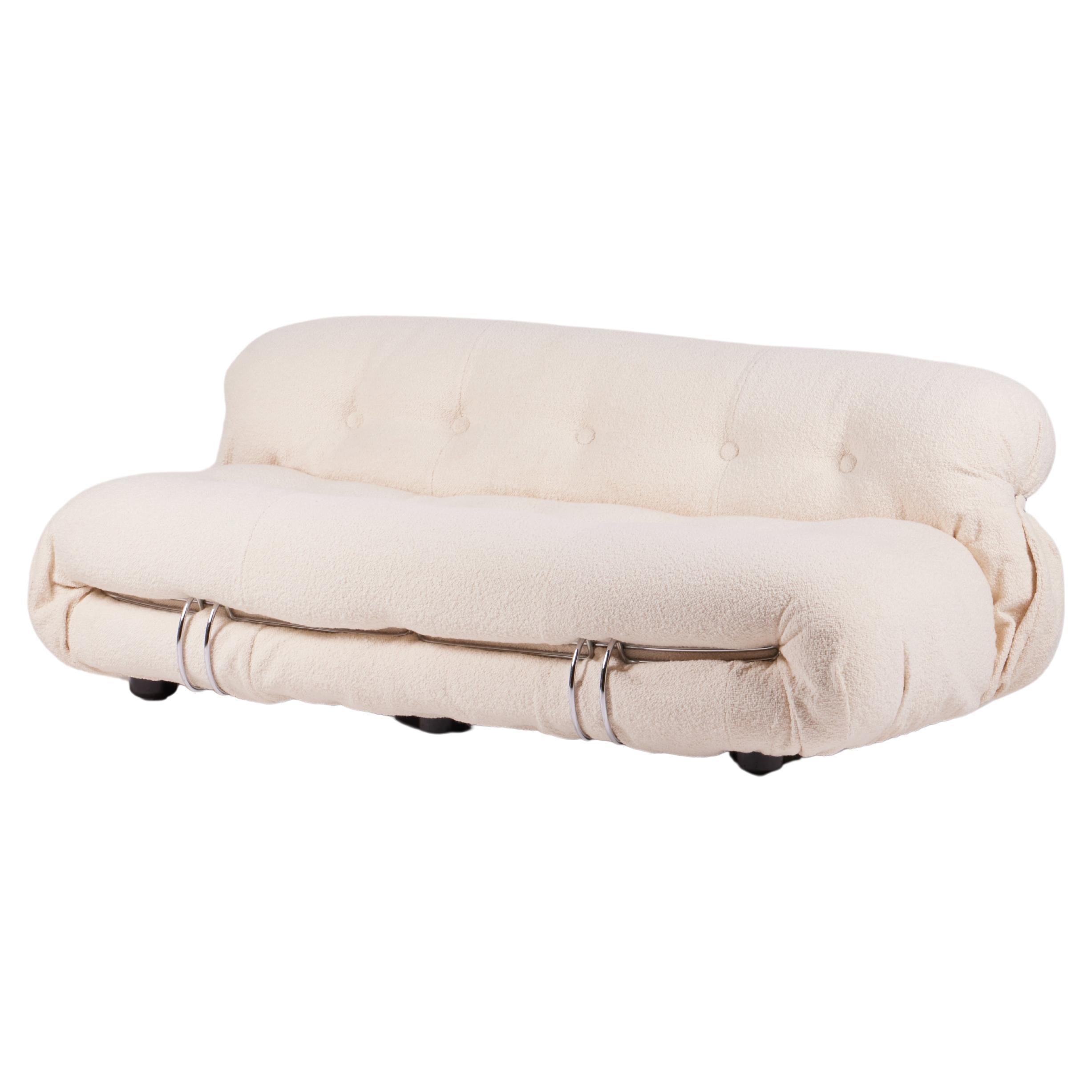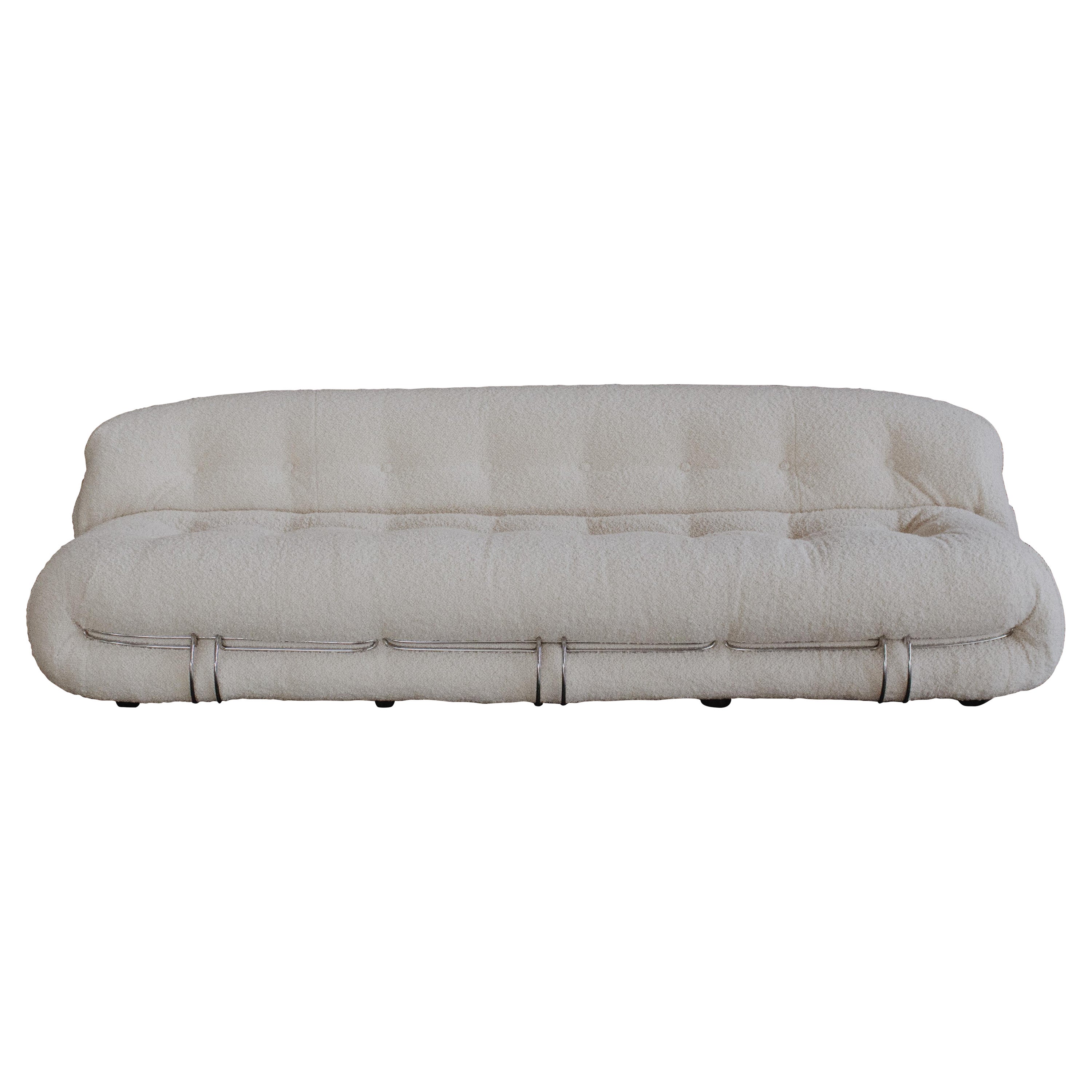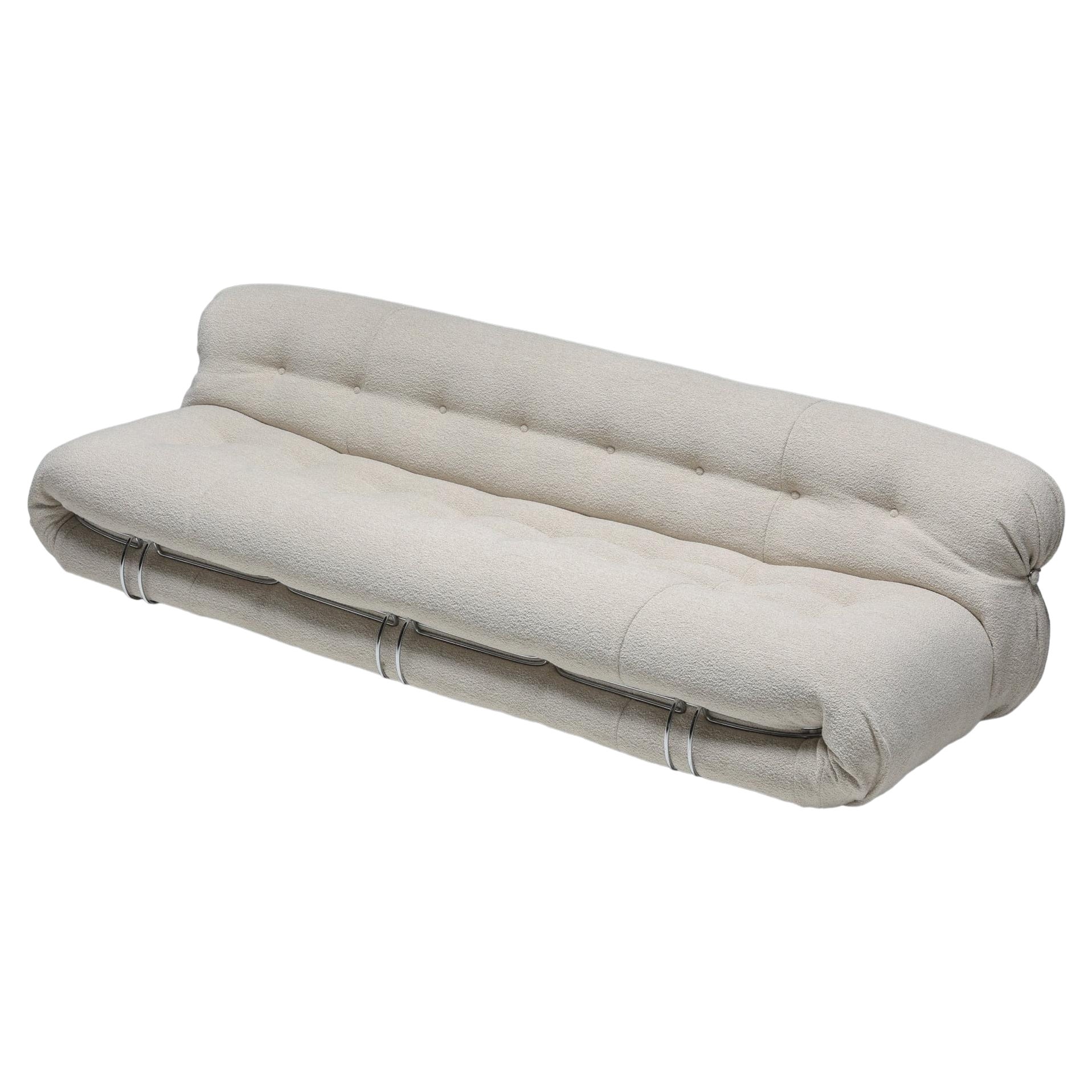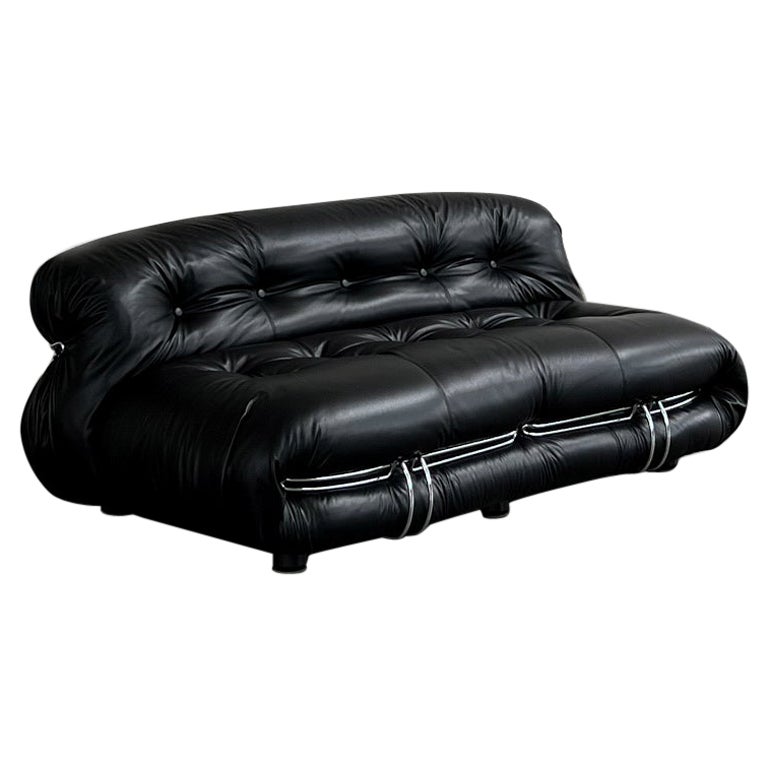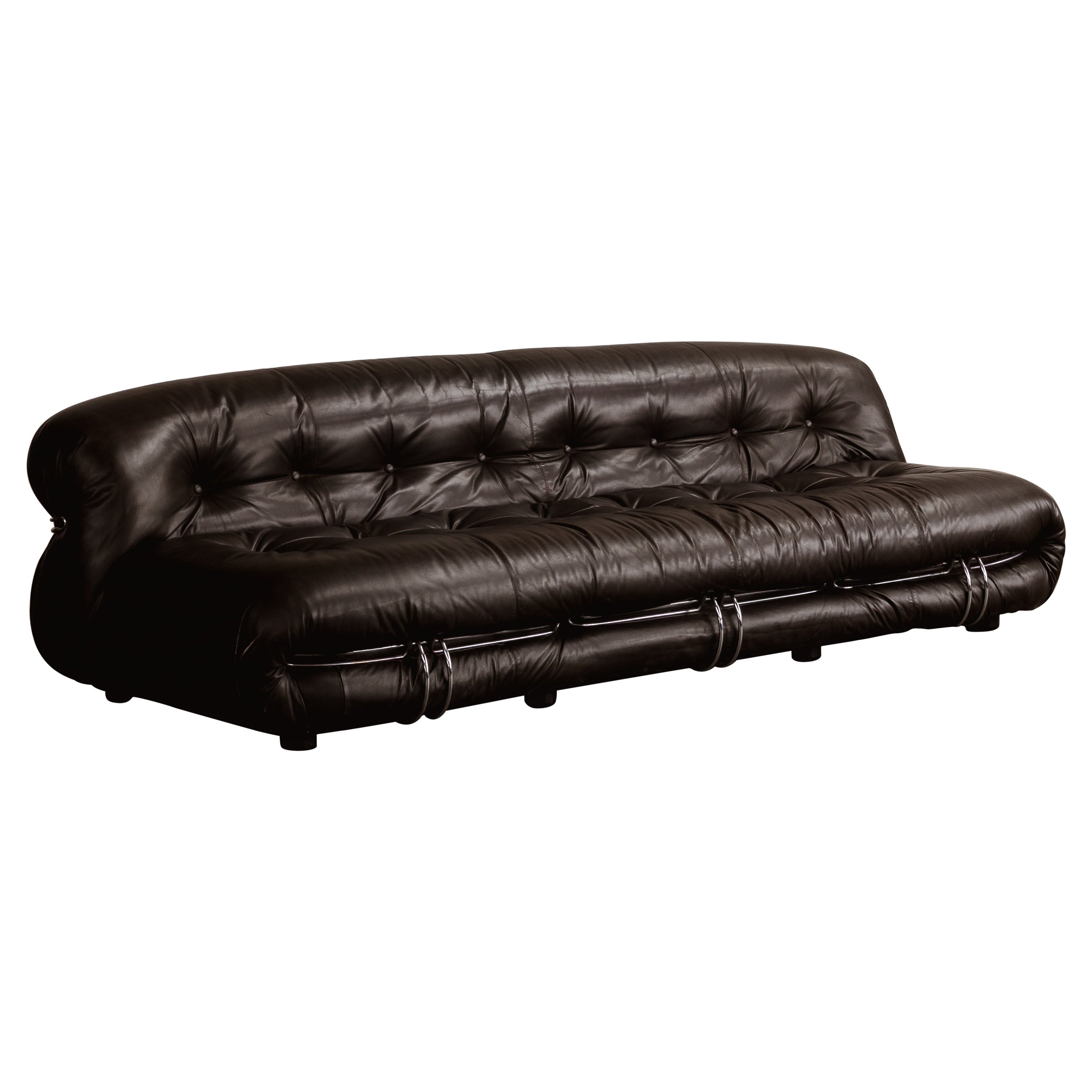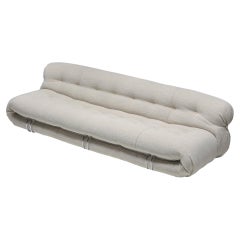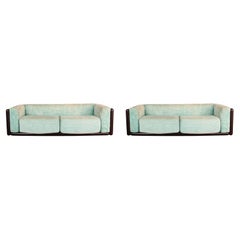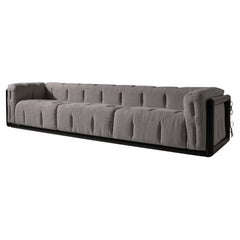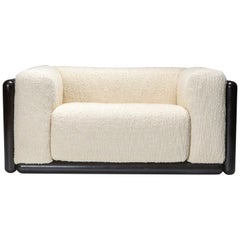
Scarpa 'Cornaro' Sofa Set in Ivory Bouclé for Simon
View Similar Items
Want more images or videos?
Request additional images or videos from the seller
1 of 13
Scarpa 'Cornaro' Sofa Set in Ivory Bouclé for Simon
About the Item
- Creator:Carlo Scarpa (Designer),Simon Gavina Editions (Manufacturer)
- Dimensions:Height: 25.6 in (65 cm)Width: 55.12 in (140 cm)Depth: 33.47 in (85 cm)Seat Height: 16.54 in (42 cm)
- Style:Post-Modern (Of the Period)
- Materials and Techniques:
- Place of Origin:
- Period:
- Date of Manufacture:1973
- Condition:Reupholstered. Wear consistent with age and use.
- Seller Location:Antwerp, BE
- Reference Number:1stDibs: LU933423558362
About the Seller
4.8
Gold Seller
These expertly vetted sellers are highly rated and consistently exceed customer expectations.
Established in 2008
1stDibs seller since 2012
980 sales on 1stDibs
Typical response time: 10 hours
More From This SellerView All
- Cassina 'Soriana' Four-Seater Sofa by Afra and Tobia Scarpa in Bouclé, 1970'sBy Afra & Tobia ScarpaLocated in Antwerp, BECassina; Scarpa; Mid-Century Modern; Boucle Wool; Afra & Tobia Scarpa; Post-Modern; Postmodern Design; 1970s Design; Italy; Italian Design; Manufactured by Cassina in the 1970s, ...Category
Vintage 1970s Italian Post-Modern Sofas
MaterialsChrome
- Vladimir Kagan "Comete" Organic Modular Sofa Set, Roche Bobois, Futurist, 2003By Vladimir KaganLocated in Antwerp, BEVladimir Kagan; Roche Bobois; modular sofa; living room set; couch; Mid-Century Modern; 1970's; Bauhaus-inspired; France; Post-modern; Futurist full set of asymmetric 'Comete' sofas with central circular ottoman designed by Vladimir Kagan for Roche Bobois, 2003. Suede upholstery in shades of red and purple. Two large sections pivot the ottoman to form an 18-foot sofa. Imported from France. Included in this set is the complementary orange and red lounge chairs. The Roche Bobois story has origins in 1950 when entrepreneur Jacques Roche converted an old Paris theater into two contemporary furniture boutiques so that his sons could help usher stunning Bauhaus-inspired work out of the shops and into French homes nearby. At another showroom called Au Beau Bois, also in the French capital city, the Chouchan family was simultaneously selling home furnishings. The families met later when Philippe and François Roche convened with Patrick and Jean-Claude Chouchan at a furniture exhibition in Copenhagen in 1960 and afterward produced a catalog announcing their partnership. This set includes eight pieces. All pieces are also available individually. Dimensions set: Purple Sofa Part 1: W:250 D:110 H:85 SH:45 Purple Sofa Part 2: W:280 D:130 H:85 SH:45 Red Sofa Part 1: W:280 D:130 H:85 SH:45 Red Sofa Part 2: W:250 D:110 H:85 SH:45 Purple ottoman...Category
Early 2000s French Post-Modern Sofas
MaterialsFabric
- Vivai del Sud Sofa in Silk and Rattan, Handmade in Italy, 1970'sBy Vivai del SudLocated in Antwerp, BEVivai del Sud Bergère chair, Italian Tropicalist Style, rattan, silk, 1970's This Italian tropicalist style sofa by Vivai del Sud is handmade in Italy. This two-seater still has i...Category
Late 20th Century Italian Post-Modern Sofas
MaterialsWool, Rattan
- Saratoga Sofa by Vignelli for Poltronova, Italy, 1964By Massimo and Lella Vignelli, PoltronovaLocated in Antwerp, BE'Saratoga' three-seat sofa by Italian designers Massimo and Lella Vignelli for Poltronova in luxurious elephant grey leather. Crafted in Italy in 1964, this sofa epitomizes the Vigne...Category
Vintage 1960s Italian Minimalist Sofas
MaterialsLeather, Wood, Lacquer
- Scarpa Soriana Sofa for Cassina, Bouclé Wool, Italy, 1970sBy Afra & Tobia Scarpa, CassinaLocated in Antwerp, BEScarpa; Afra & Tobia Scarpa; Soriana Sofa; Two-Seater; Cassina; Bouclé Wool; Italy; Italian Design; 1970s; Mid-Century Modern; This Soriana two-seater sofa, reupholstered in bouclé ...Category
Vintage 1970s Italian Mid-Century Modern Sofas
MaterialsChrome
- Romeo Rega Geometric Sofa in Black and Brass Hollywood Regency, 1970sBy Maison Jansen, Romeo RegaLocated in Antwerp, BEHollywood Regency; Romeo Rega; Italy; 1970s; Four-Seater Sofa; Italian Design; Minimalist; Quality Italian Craftsmanship; Sophisticated Modernist Furniture...Category
Late 20th Century Italian Hollywood Regency Sofas
MaterialsBrass
You May Also Like
- Carlo Scarpa Iroko and Velvet Cornaro Sofa for Studio Simon, 1974, Set of 2By Studio Simon, Carlo ScarpaLocated in Vicenza, ITSet of 2 Cornaro two-seater sofas, designed by Carlo Scarpa and manufactured by Studio Simon in 1974. Made of Iroko wood, foam, and azure chenille velvet. Excellent vintage conditi...Category
Vintage 1970s Italian Mid-Century Modern Living Room Sets
MaterialsChenille, Velvet, Foam, Wood
- Carlo Scarpa Iroko Wood and Green Velvet Cornaro Sofa for Studio Simon, 1974By Carlo Scarpa, Studio SimonLocated in Vicenza, ITCornaro two-seater sofa, designed by Carlo Scarpa and manufactured by Studio Simon in 1974. Made of Iroko wood, foam, and azure chenille velvet. Excellent vintage condition. Born in Venice on June 2nd, 1906, Carlo Scarpa began working very early. Only a year after he had first qualified as an architect in 1926, he began working for the Murano glassmakers Cappellin & Co. in a consultative capacity; from 1927, he began to experiment with the Murano glass, and this research not only gave him excellent results here but would also inform his progress for many years to come. Between 1935 and 1937, as he entered his thirties, Carlo Scarpa accepted his first important commission, the renovation of Venice’s Cà Foscari. He adapted the spaces of this stately University building which stands on the banks of the Grand Canal, creating rooms for the Dean’s offices and a new hall for academic ceremonies; Mario Sironi and Mario De Luigi were charged with doing the restoration work on the frescos. After 1945, Carlo Scarpa was constantly busy with new commissions, including various furnishings and designs for the renovation of Venice’s Hotel Bauer and designing a tall building in Padua and a residential area in Feltre, all worth mentioning. One of his key works, despite its relatively modest diminished proportions, was the first of many works which were to follow in the nineteen fifties: the [bookshop known as the] Padiglione del Libro, which stands in Venice’s Giardini di Castello and shows clearly Scarpa’s passion for the works of Frank Lloyd Wright. In the years which were to follow, after he had met the American architect, Scarpa repeated similar experiments on other occasions, as can be seen, in particular, in the sketches he drew up in 1953 for villa Zoppas in Conegliano, which show some of his most promising work. However, this work unfortunately never came to fruition. Carlo Scarpa later created three museum layouts to prove pivotal in how twentieth-century museums were set up from then on. Between 1955 and 1957, he completed extension work on Treviso’s Gipsoteca Canoviana [the museum that houses Canova’s sculptures] in Possagno, taking a similar experimental approach to the one he used for the Venezuelan Pavilion at [Venice’s] Giardini di Castello which he was building at the same time (1954-56). In Possagno Carlo Scarpa was to create one of his most incredible ever works, which inevitably bears comparison with two other museum layouts that he was working on over the same period, those of the Galleria Nazionale di Sicilia, housed in the Palazzo Abatellis in Palermo (1953-55) and at the Castelvecchio in Verona (1957- 1974), all of which were highly acclaimed, adding to his growing fame. Two other buildings, which are beautifully arranged in spatial terms, can be added to this long list of key works that were started and, in some cases, even completed during the nineteen fifties. After winning the Olivetti Award for architecture in 1956, Scarpa began work in Venice’s Piazza San Marco on an area destined to house products made by the Industrial manufacturers Ivrea. Over the same period (1959-1963), he also worked on renovating and restoring the gardens and ground floor of the Fondazione Querini Stampalia in Venice, which many consider one of his greatest works. While he worked on-site at the Fondazione Querini Stampalia, Carlo Scarpa also began building a villa in Udine for the Veritti family. To shed some light on how much his work evolved over the years, it may be useful to compare this work with that of his very last building, villa Ottolenghi Bardolino, which was near completion at the time of his sudden death in 1978. Upon completion of villa Veritti over the next ten years, without ever letting up on his work on renovation and layouts, Scarpa accepted some highly challenging commissions which were to make the most of his formal skills, working on the Carlo Felice Theatre in Genoa as well as another theatre in Vicenza. Towards the end of this decade, in 1969, Rina Brion commissioned Carlo Scarpa to build the Brion Mausoleum in San Vito d’Altivole (Treviso), a piece he continued to work on right up until the moment of his death. Nevertheless, even though he was totally absorbed by work on this mausoleum, plenty of other episodes can offer some insight into the final years of his career. As work on the San Vito d’Altivole Mausoleum began to lessen in 1973, Carlo Scarpa started building the new headquarters for the Banca Popolare di Verona. He drew up plans that were surprisingly different from the work he carried out simultaneously on the villa Ottolenghi. However, the plans Carlo Scarpa drew up, at different times, for a monument in Brescia’s Piazza della Loggia commemorating victims of the terrorist attack on May 28th, 1974, make a sharp contrast to the work he carried out in Verona, almost as if there is a certain hesitation after so many mannered excesses. The same Pietas that informs his designs for the Piazza Della Loggia can also be seen in the presence of the water that flows through the Brion Mausoleum, almost as if to give a concrete manifestation of pity in this twentieth-century work of art. Carlo Scarpa has put together a highly sophisticated collection of structures occupying the mausoleum’s L-shaped space stretching across both sides of the old San Vito d’Altivole cemetery. A myriad of different forms and an equally large number of different pieces, all of which are separate and yet inextricably linked to form a chain that seems to offer no promise of continuity, arising out of these are those whose only justification for being there is to bear the warning “si vis vitam, para mortem,” [if you wish to experience life prepare for death] as if to tell a tale that suggests the circle of time, joining together the commemoration of the dead with a celebration of life. At the entrance of the Brion Mausoleum stand the “propylaea,” followed by a cloister that ends by a small chapel, with an arcosolium bearing the family sarcophagi, the central pavilion, held in place on broken cast iron supports, stands over a mirror-shaped stretch of water and occupies one end of the family’s burial space. The musical sound of the walkways, teamed with the luminosity of these harmoniously blended spaces, shows how, in keeping with his strong sense of vision, Carlo Scarpa could make the most of all his many skills to come up with this truly magnificent space. As well as an outstanding commitment to architectural work, with the many projects we have already seen punctuating his career, Carlo Scarpa also made many equally important forays into the world of applied arts. Between 1926 and 1931, he worked for the Murano glassmakers Cappellin, later taking what he had learned with him when he went to work for the glassmakers Venini from 1933 until the 1950s. The story of how he came to work on furniture design is different, however, and began with the furniture he designed to replace lost furnishings during his renovation of Cà Foscari. The later mass-produced furniture started differently, given that many pieces were originally one-off designs “made to measure.” Industrial manufacturing using these designs as prototypes came into being thanks to the continuity afforded him by Dino Gavina, who, as well as this, also invited Carlo Scarpa to become president of the company Gavina SpA, later to become SIMON, a company Gavina founded eight years on, in partnership with Maria Simoncini (whose own name accounts for the choice of company name). Carlo Scarpa and Gavina forged a strong bond in 1968 as they began to put various models of his into production for Simon, such as the “Doge” table, which also formed the basis for the “Sarpi” and “Florian” tables. In the early seventies, other tables that followed included “Valmarana,” “Quatour,” and “Orseolo.” While in 1974, they added a couch and armchair, “Cornaro,” to the collection and the “Toledo” bed...Category
Vintage 1970s Italian Mid-Century Modern Living Room Sets
MaterialsVelvet, Foam, Chenille, Wood
- Cornaro sofa by Carlo Scarpa for Simon Gavina, Italy 1973By Carlo Scarpa, Simon Gavina EditionsLocated in Rotterdam, NLCornaro sofa by Carlo Scarpa for Simon Gavina, Italy 1973. Stunning solid round dark stained Mahogany wooden frame and thick upholstered cushions. The cushions are reupholstered in a...Category
Vintage 1970s Italian Mid-Century Modern Sofas
MaterialsLinen, Mahogany
- Rare "Cornaro 220" Sofa by Carlo Scarpa for Simon International, 1970sBy Carlo ScarpaLocated in Skokie, ILCarlo Scarpa rare "Cornaro 220" Sofa by for Simon International, Italy, 1970s Additional Information: Materials: Stained mahogany, velvet, brass, leather Dimensions: 26" H x 119...Category
20th Century Italian Mid-Century Modern Sofas
MaterialsMahogany
- Afra & Tobia Scarpa “Soriana” Sofa for Cassina, Bouclé, 1969By Cassina, Afra & Tobia ScarpaLocated in Milan, ITAfra & Tobia Scarpa “Soriana” Sofa for Cassina, Bouclé Wool, 1969 The lustrous original chromed metal structure embraces the soft and voluptuous alpaca boucle' volumes in this Mid-C...Category
Vintage 1970s Italian Modern Sofas
MaterialsChrome
- Afra & Tobia Scarpa “Soriana” Sofa for Cassina, Bouclé Wool, 1969By Cassina, Afra & Tobia ScarpaLocated in Lonigo, VenetoAfra & Tobia Scarpa “Soriana” three-seater for Cassina, bouclé wool and chromed steel, Italy, 1969. Although technically designed in the 1960s, the "Soriana" model by the Italian duo Tobia and Afra Scarpa is firmly associated with the next decade, when its popularity peaked. "Soriana" is low and invites you to sink into its curves. Its most notable feature, however, is the Minimalist structure in chromed steel. This external structure in steel rod keeps the cover taut using buttons...Category
Vintage 1960s Italian Mid-Century Modern Living Room Sets
MaterialsChrome
Recently Viewed
View AllMore Ways To Browse
5 Piece Parlor Set
Antik L
Antique Bergere 3 Piece Suite
Asian Trimming Living Room Sets
Black Brass Living Room Sets
Ernst Huber
Jan van Grunsven On Sale
Miklos Ybl
North American Reed Living Room Sets
Pur Sofa
Southeast Asian Feathers Living Room Sets
Southeast Asian Latex Living Room Sets
Southeast Asian Trimming Living Room Sets
Thai Feathers Living Room Sets
Thai Latex Living Room Sets
Thai Plastic Living Room Sets
Thai Reclaimed Wood Living Room Sets
Thai Trimming Living Room Sets

